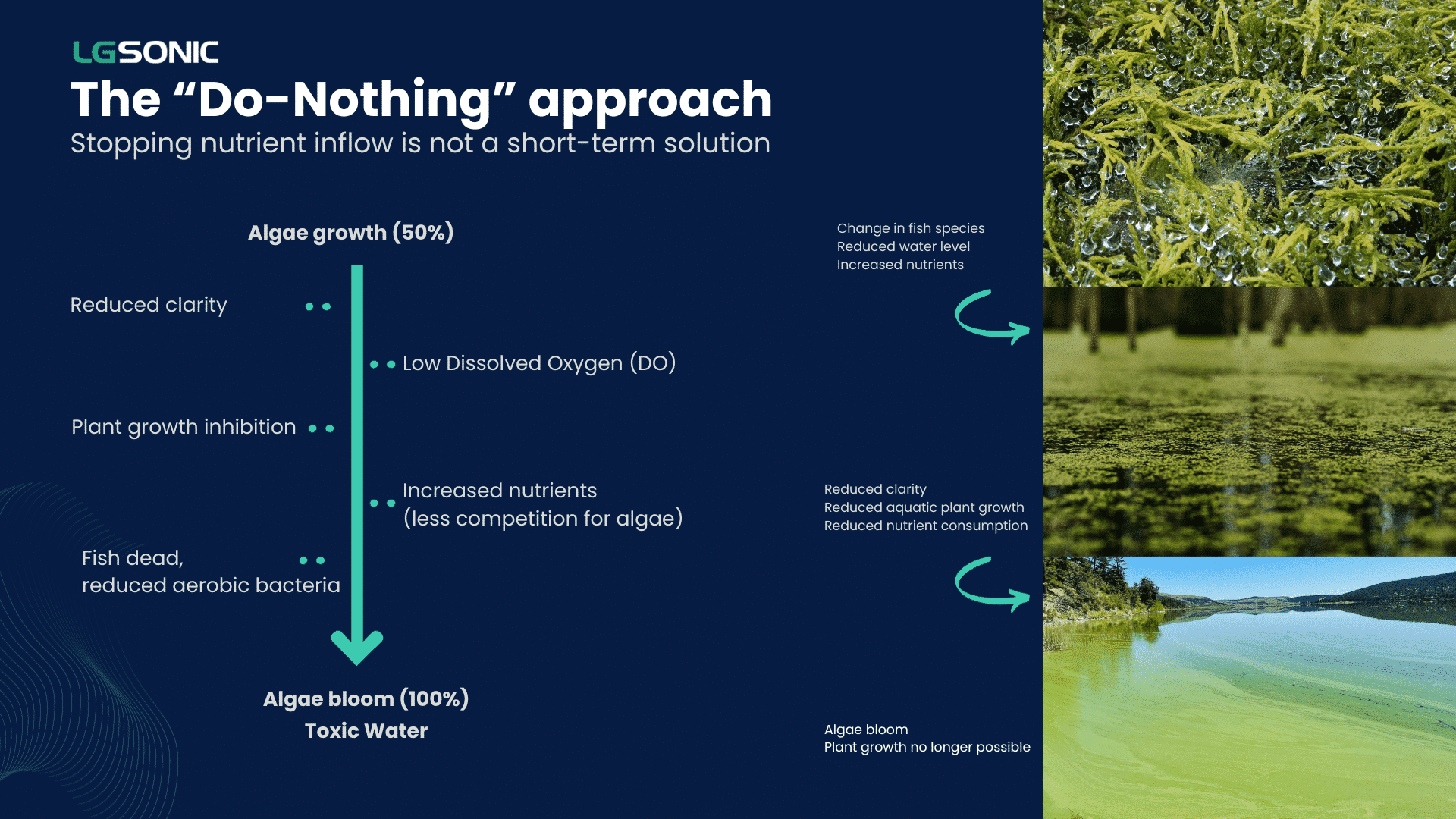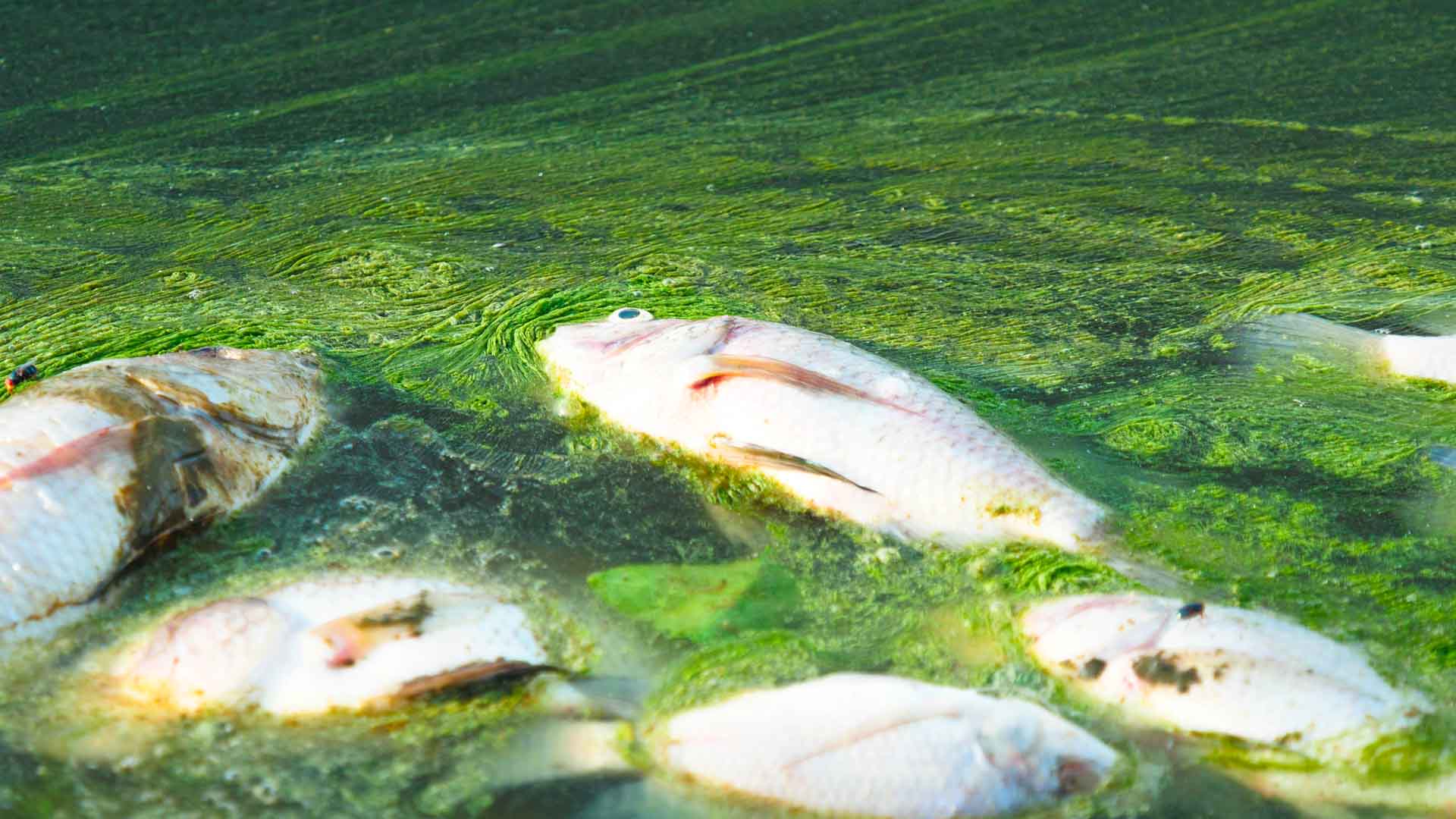The Do-Nothing approach to algal blooms - LG Sonic
Published on by Water Network Research, Official research team of The Water Network in Case Studies
Written by Jon Shepherd, Commercial Director LG Sonic
As a concept in engineering and environmental management, in parallel with solution-proposals, consideration is also given to the consequences of inaction and leaving a challenge unmet with solutions. The “do-nothing” approach to managing algal blooms, therefore, involves taking minimal or no action to actively control or mitigate the effects of algal blooms in natural bodies of water such as lakes and reservoirs. This approach essentially allows nature to take its course, without human intervention.
Decoding algal blooms

Algae is a natural and important part of our aquatic ecosystems; as primary producers, using sunlight to photosynthesise, these organisms form the basis of food webs and are therefore essential to life. But in some conditions, a single genus of algae can dominate with exponential out-of-control growth. The mass of cells reduces water clarity, preventing macrophytes, (aquatic plants) on the lake bed from photosynthesising. Their numbers can collapse, reducing habitat, loss of shelter and niches for other organisms within the system. Nutrients in the water, of which nitrate and more so, phosphate are key, are no longer assimilated by plants. As such, this reduces competition for the algae who also need the nutrients. They no longer face a limit to growth and can continue to dominate and bloom, with a positive feedback loop or vicious circle supporting algal growth now established.
With the loss and breakdown of macrophytes, dissolved oxygen levels can crash as bacteria breaks down the organic matter. But the bacteria themselves are aerobic, requiring oxygen to perform their work. As such, incomplete breakdown of organics occurs and sedimentation rates increase with smothering of the lake bed. Nutrients that were previously locked up within the sediment can now be released by the bacteria, with the evolution of ammonium, manganese, and phosphate.
With the macrophyte breakdown requiring oxygen, dissolved oxygen in the water column is consumed and invertebrates and fish either flee the hypoxic conditions, or can die, with the collapse of entire food webs.

Bloom conditions persist uninterrupted for as long as conditions allow. Frequently, the end of a bloom is caused by algae reaching a growth limit. When this limit is met, algae dies and their biomass begins to break down. Again, this causes crashes in dissolved oxygen, and if any toxic genuses were present, their cells rupture with the contents releasing chemicals such as Microcystins, MIB and Geosmin, which cause musty, stale taste and odours as well as a health threat to water users, our pets and wildlife. A growing list of medical conditions is attributable to toxic bloom species including respiratory, liver, kidney diseases, paralysis and neurological conditions.
Attached link
https://www.lgsonic.com/do-nothing-approach-to-algal-blooms/?utm_source=newsletter&utm_medium=email&utm_campaign=lgs_campaign_20231004_en&utm_source=ZohoMarketingHub&utm_campaign=LGS+Newsletter+04%2F10%2F2023+EN_2023-10-03_1&utm_medium=emailTaxonomy
- Algae
- Cell and Molecular biology, Plant biology, Algal biology
- Algal Blooms
- Hazardous Algae Blooms